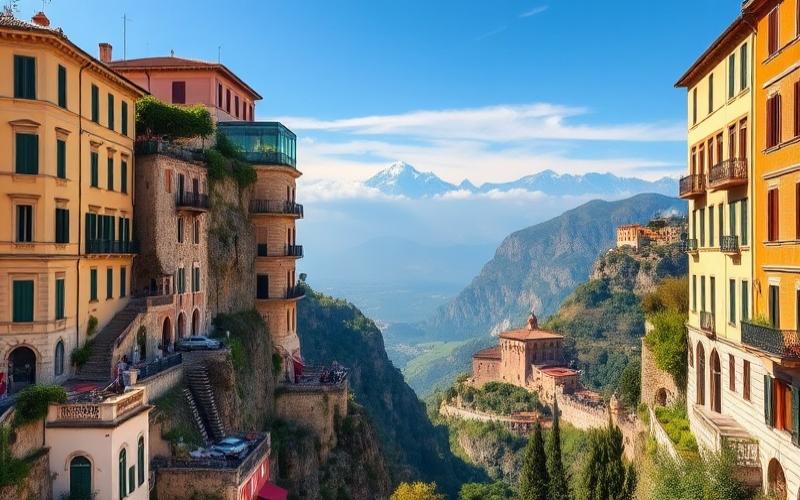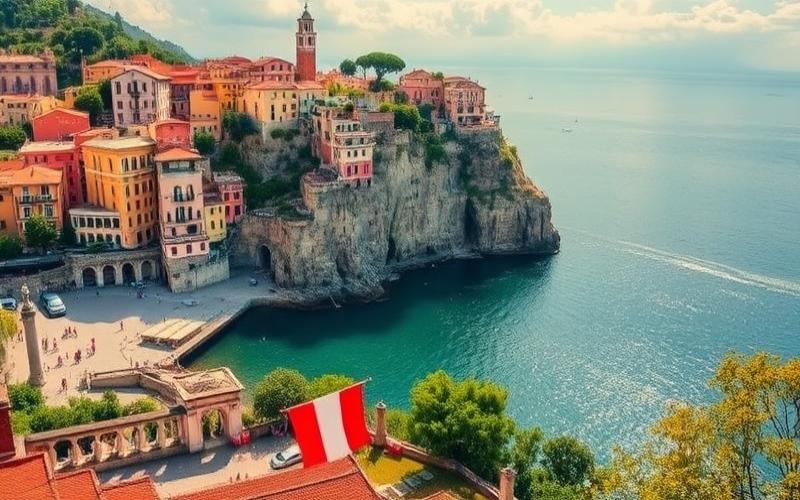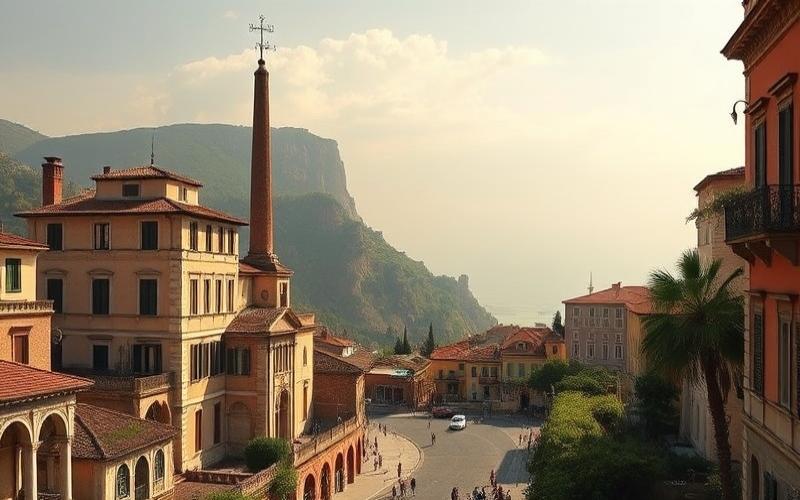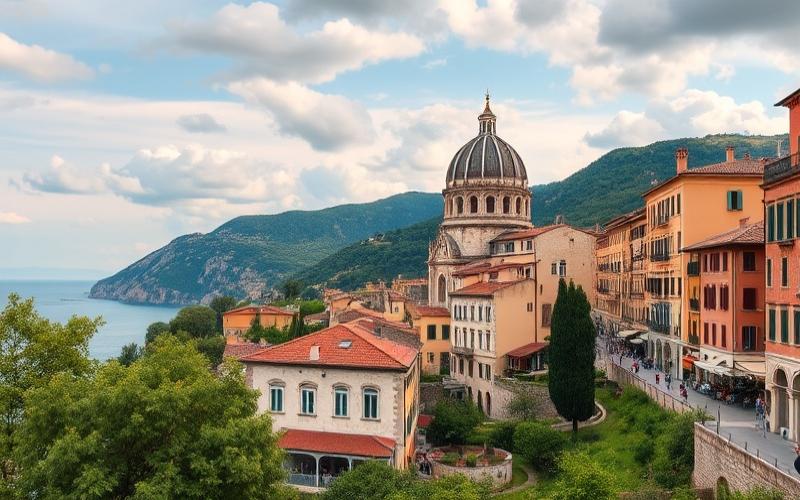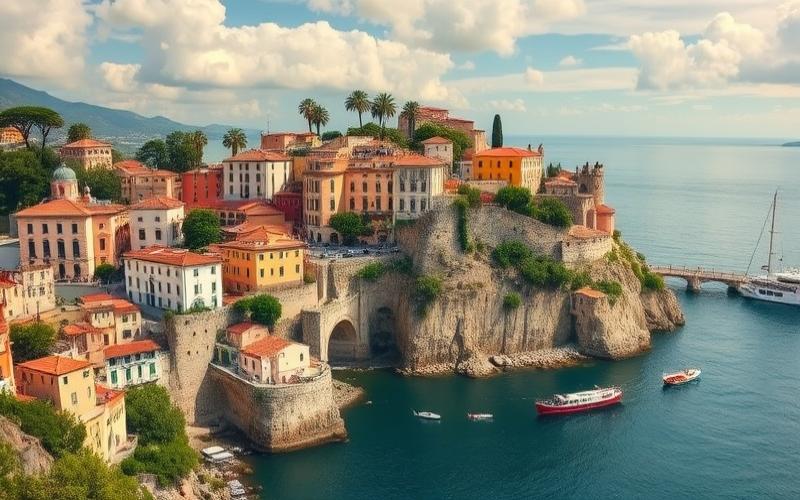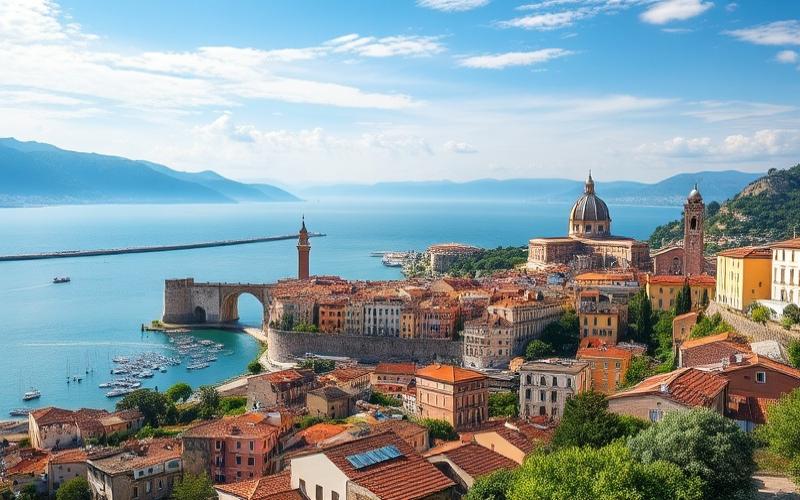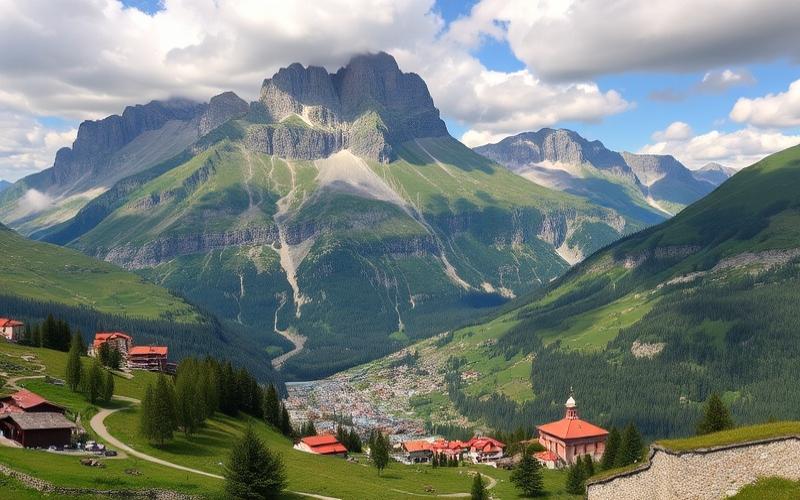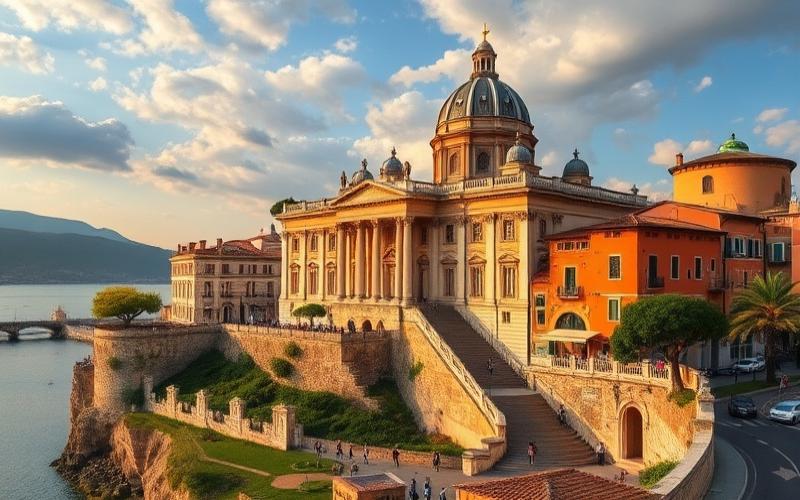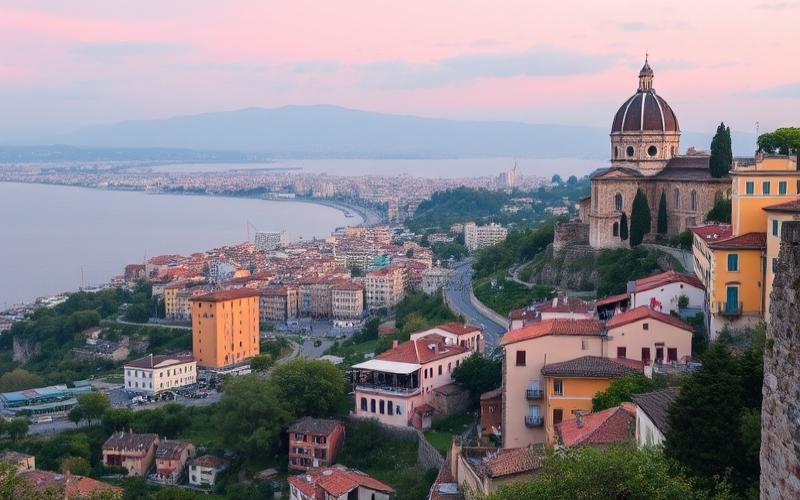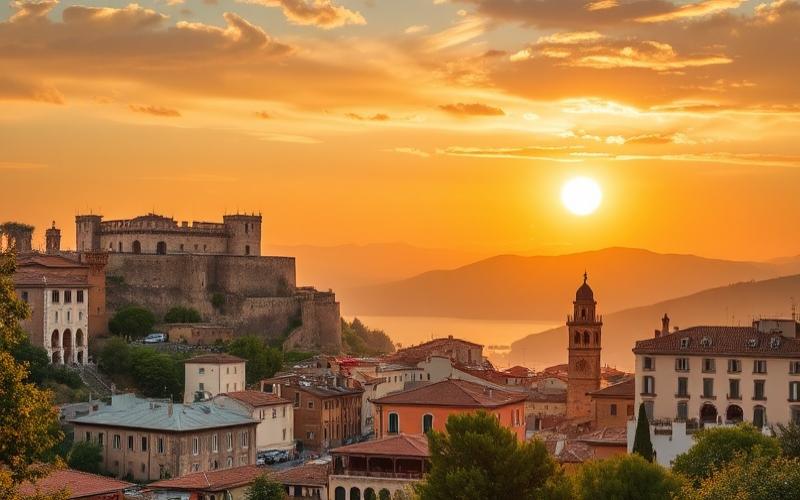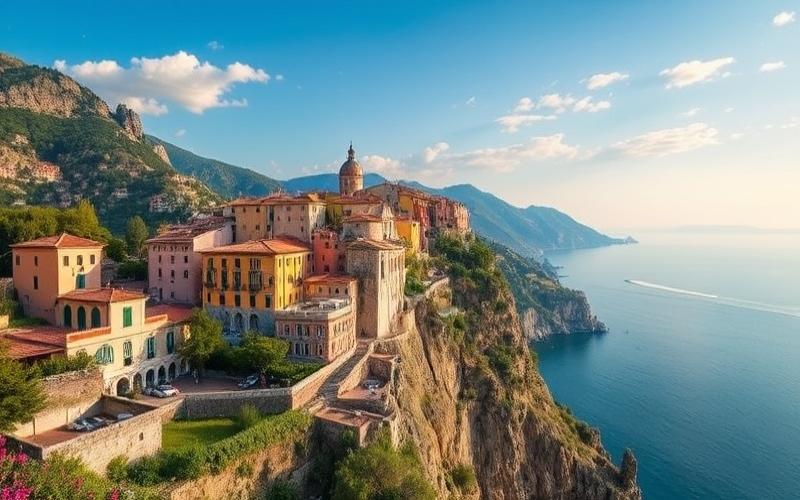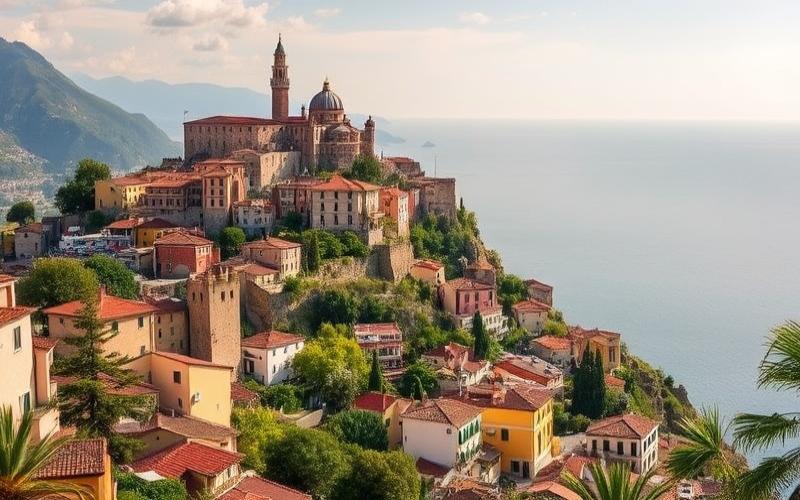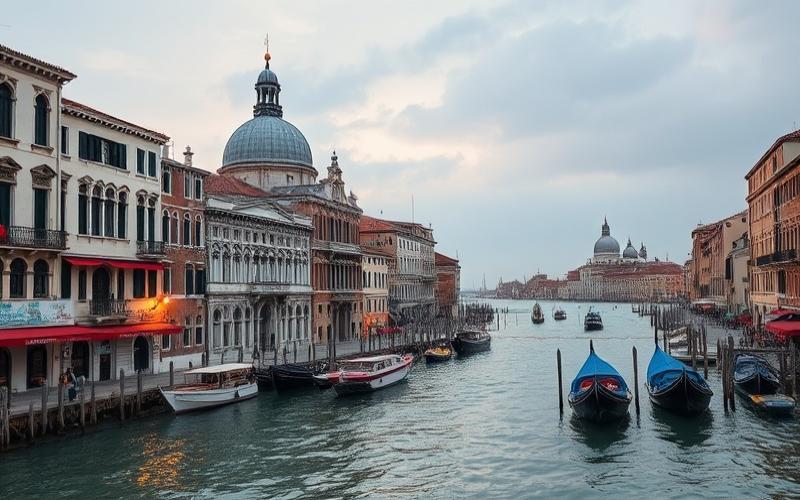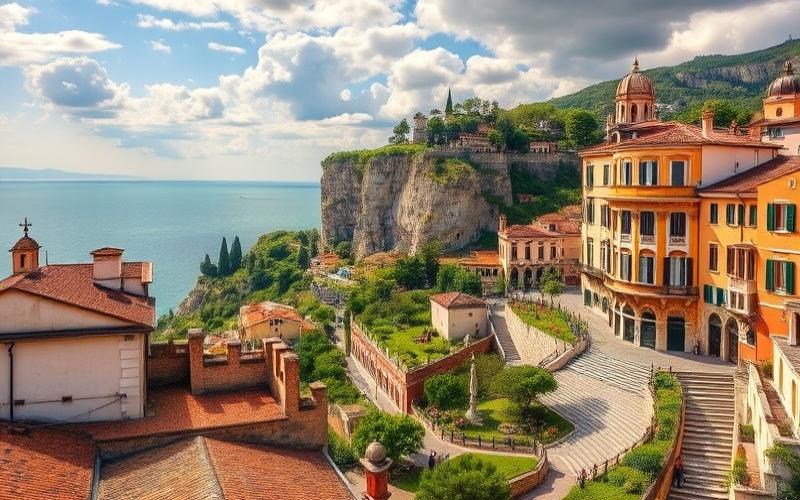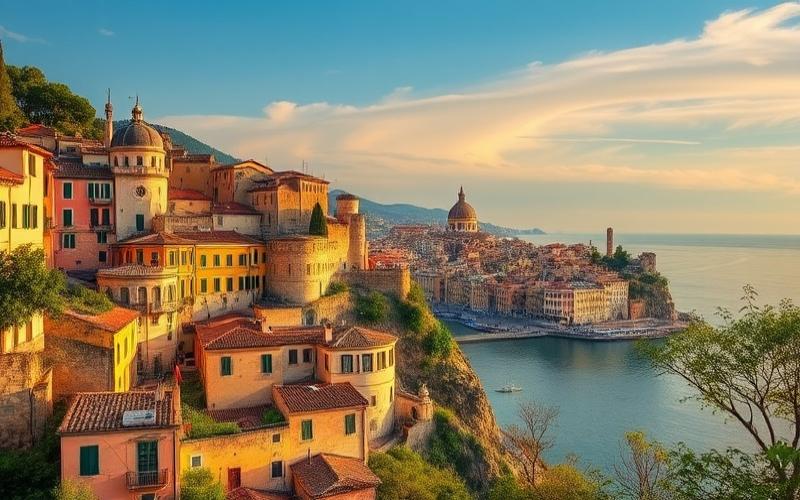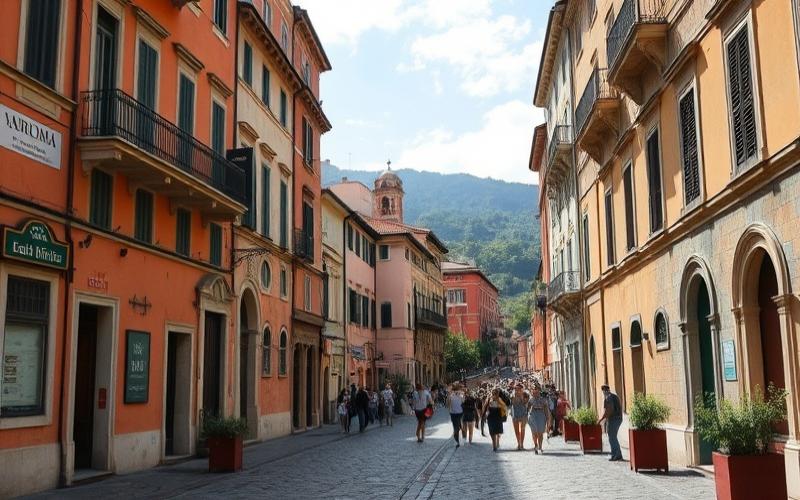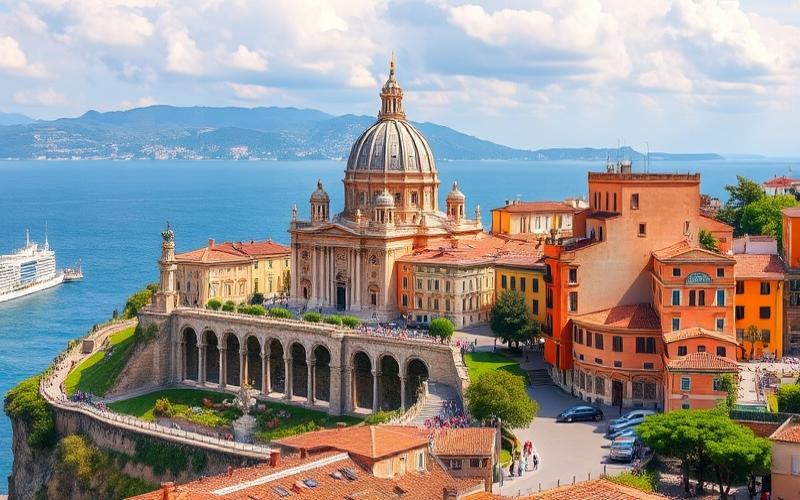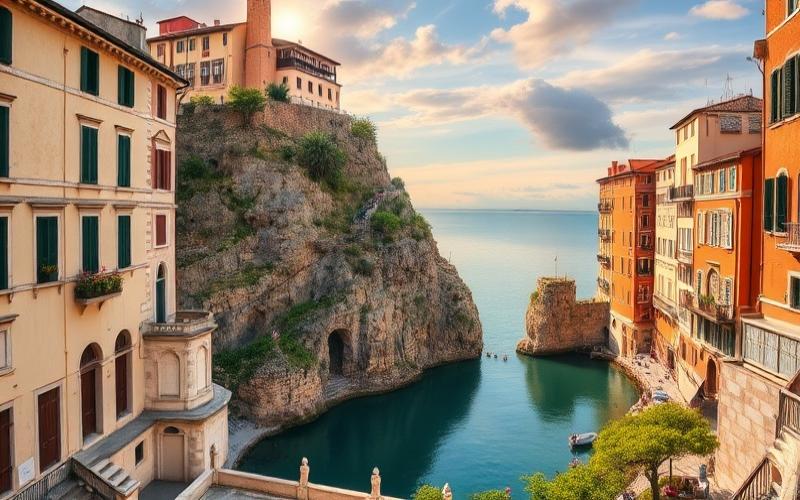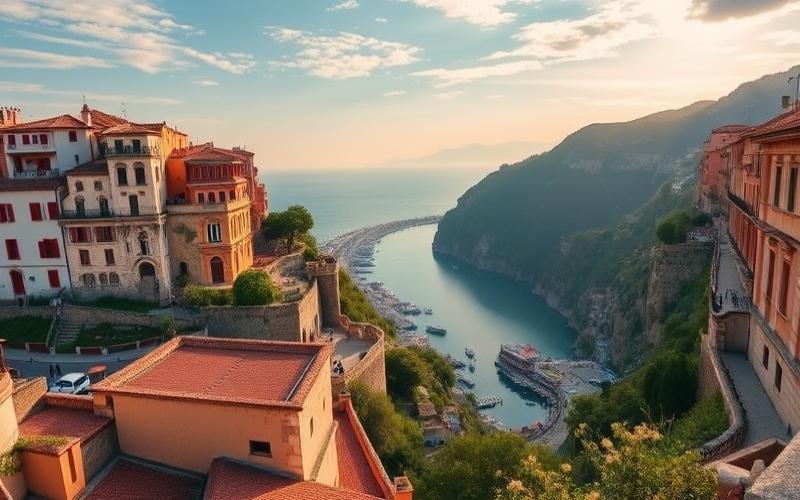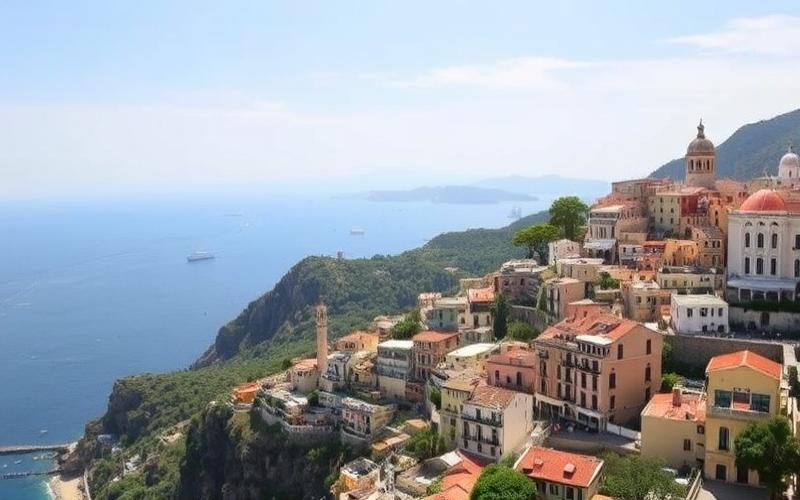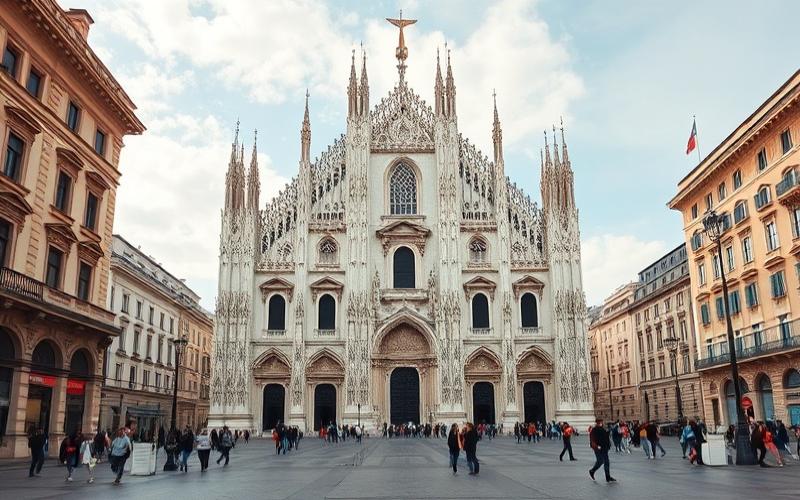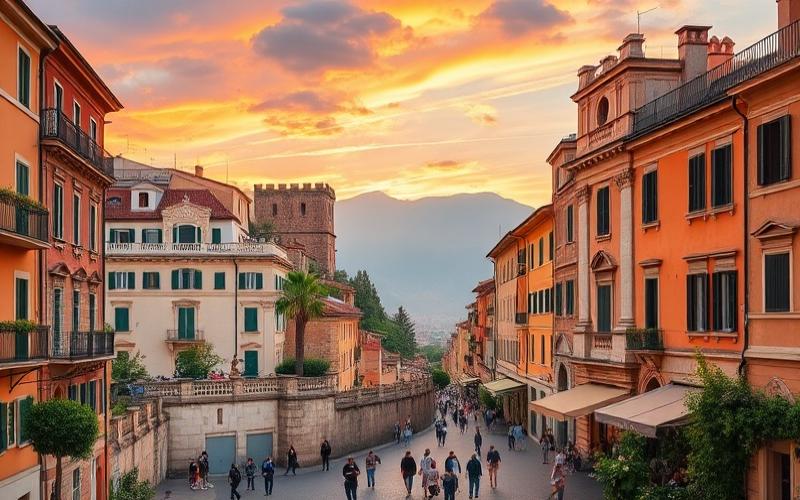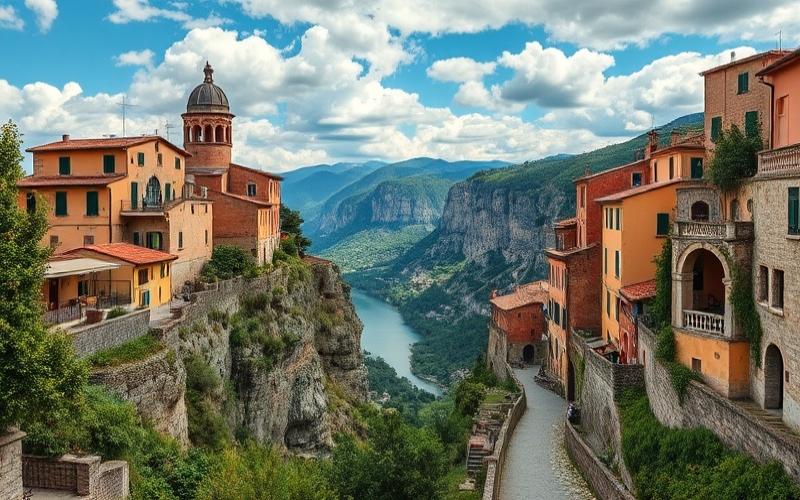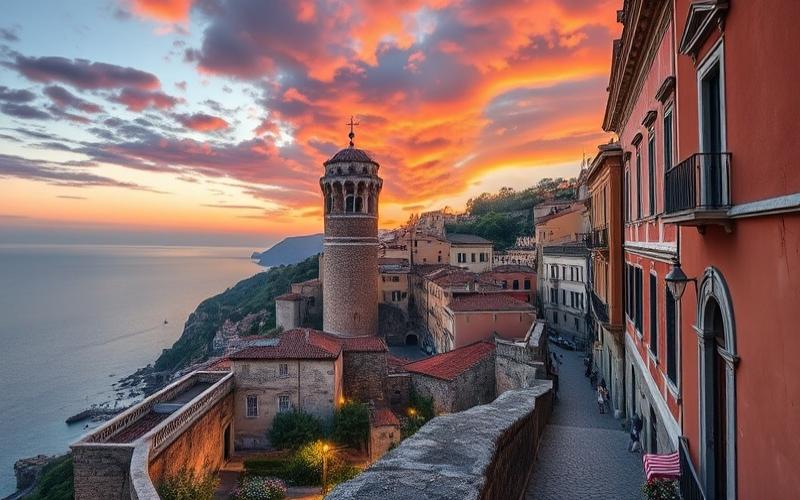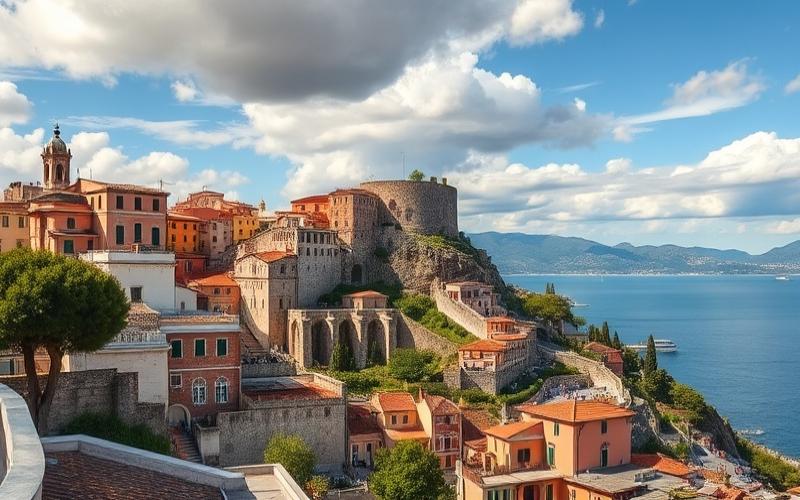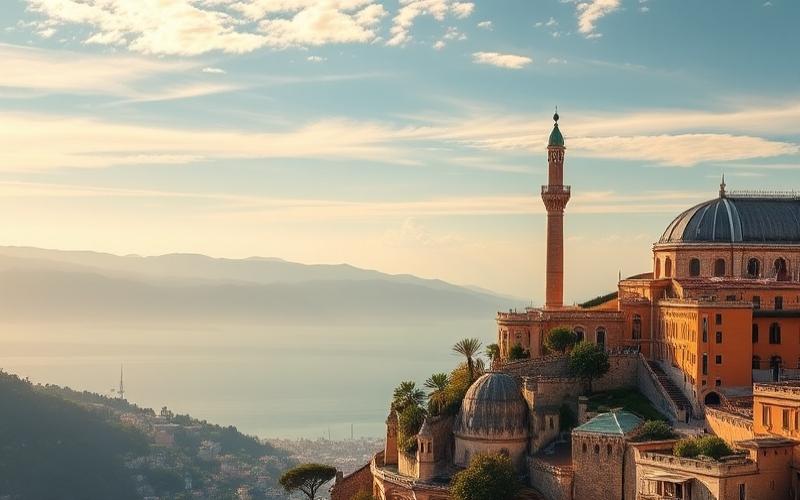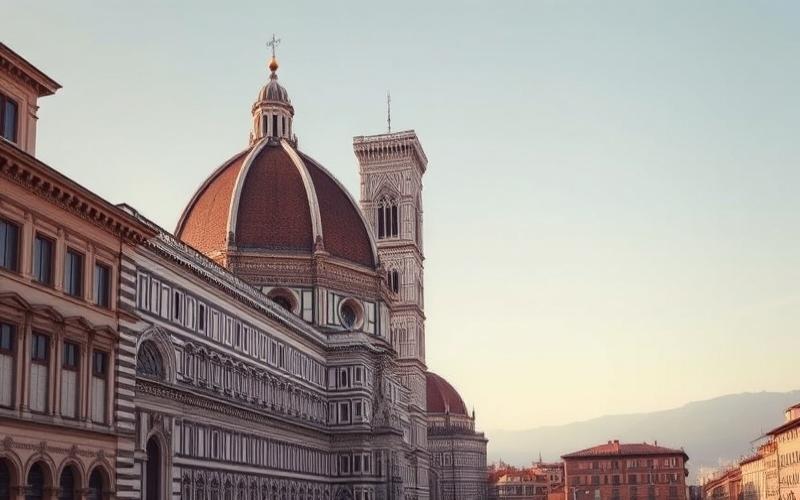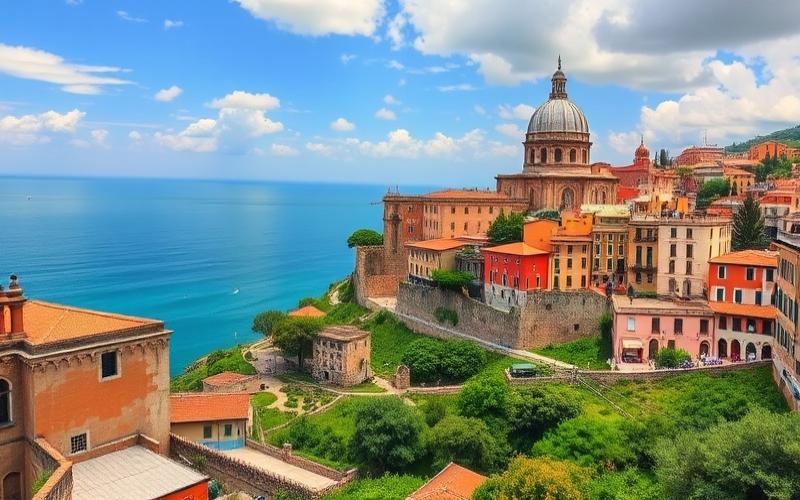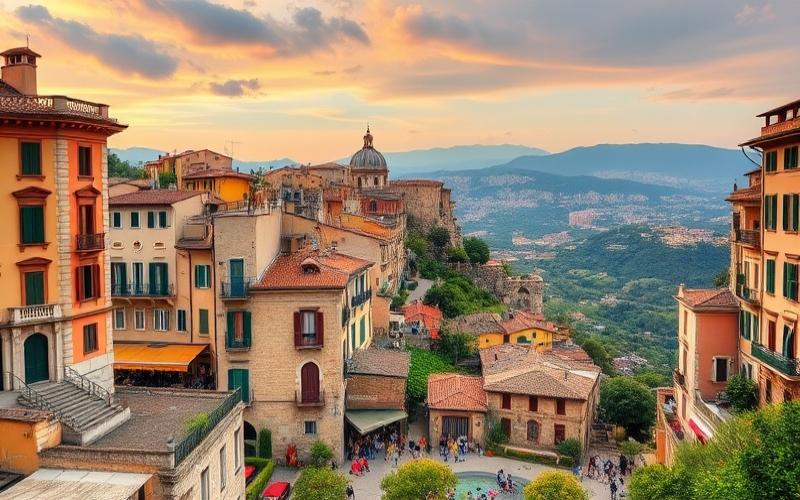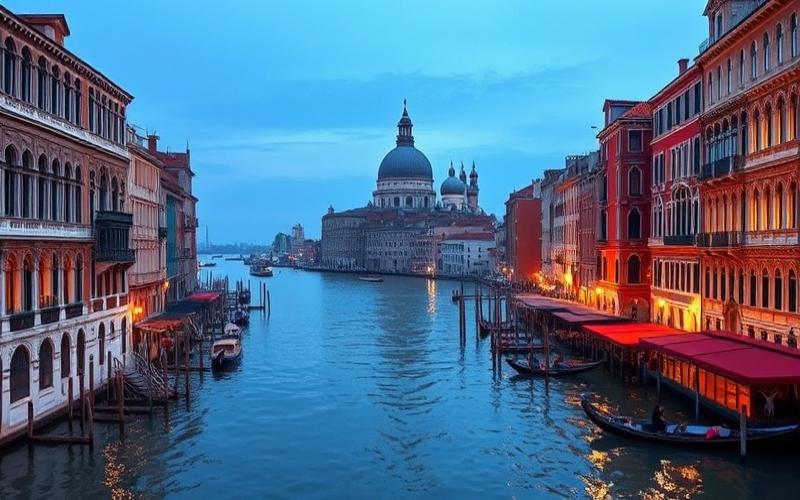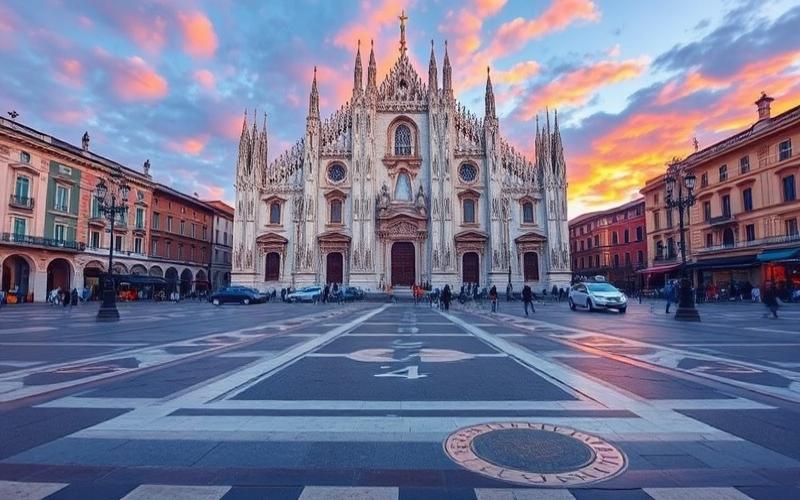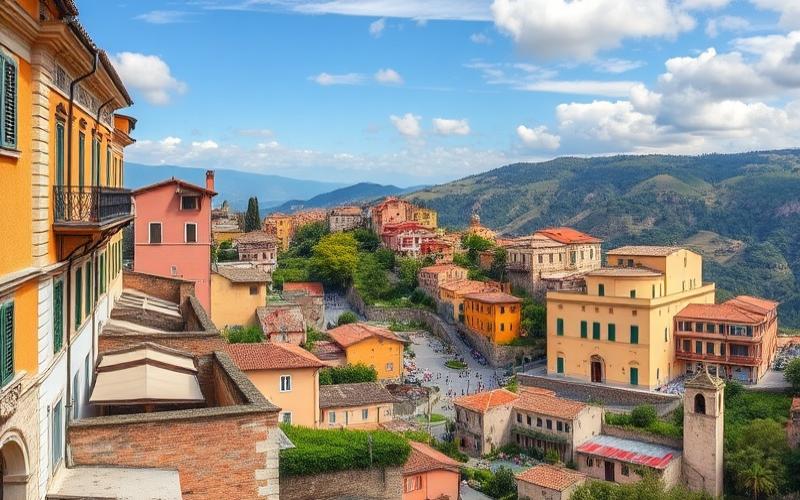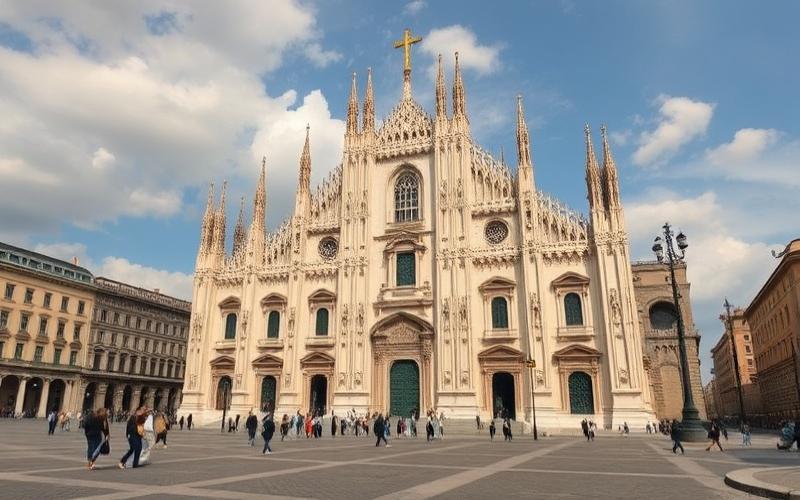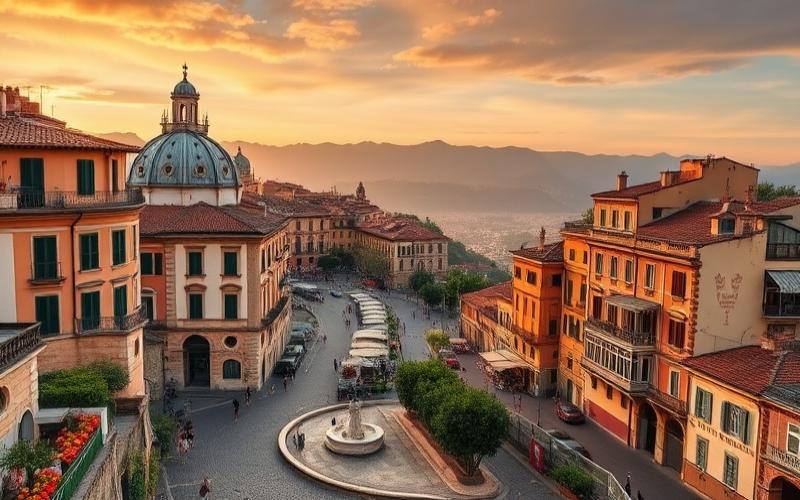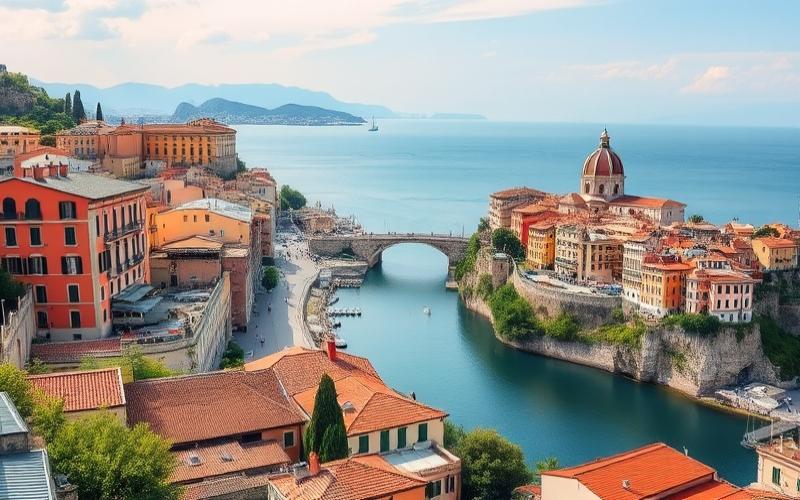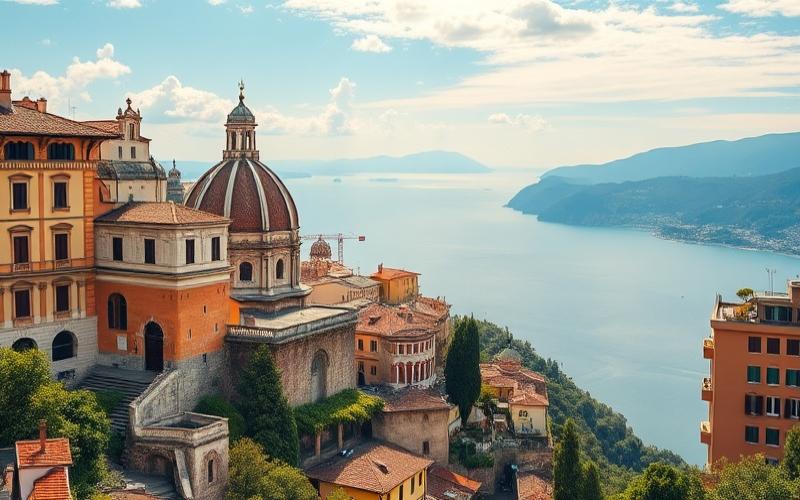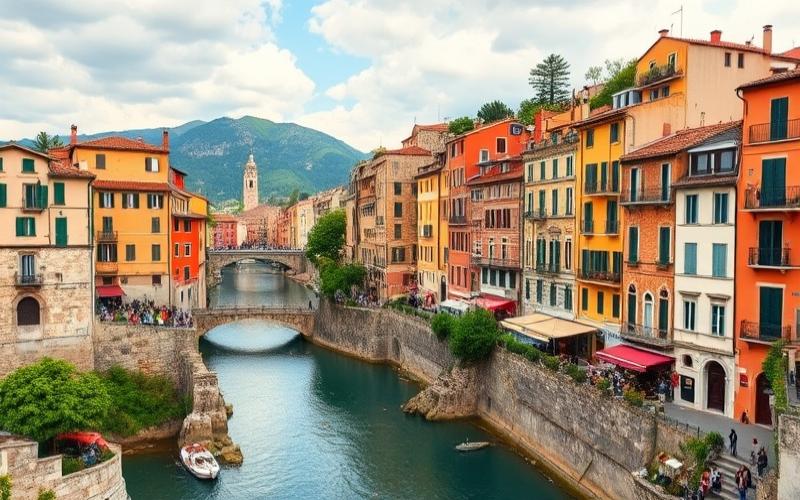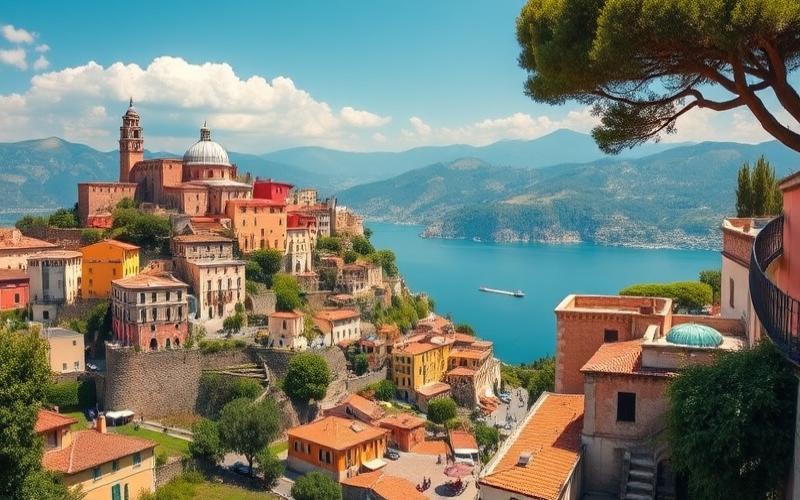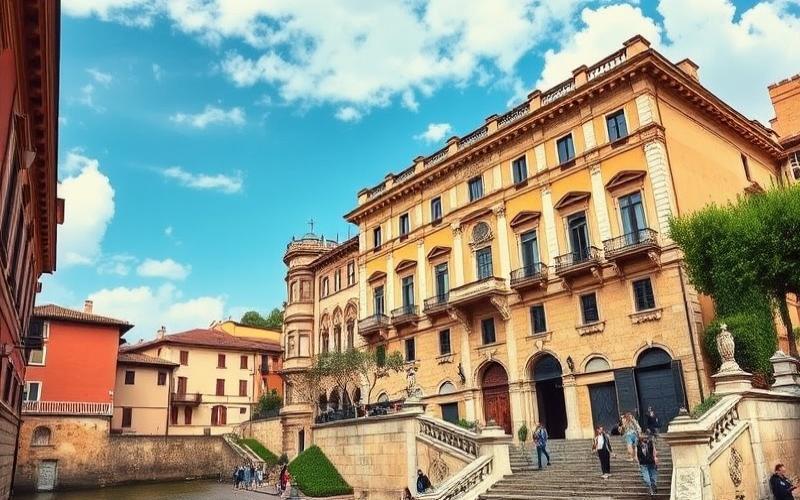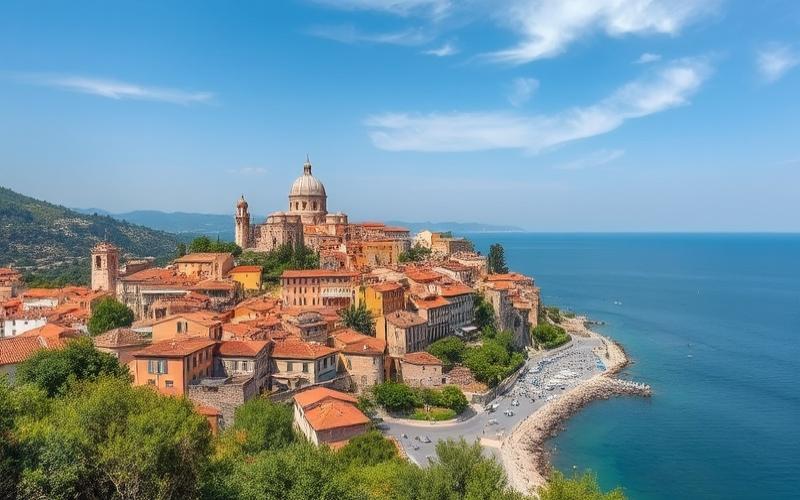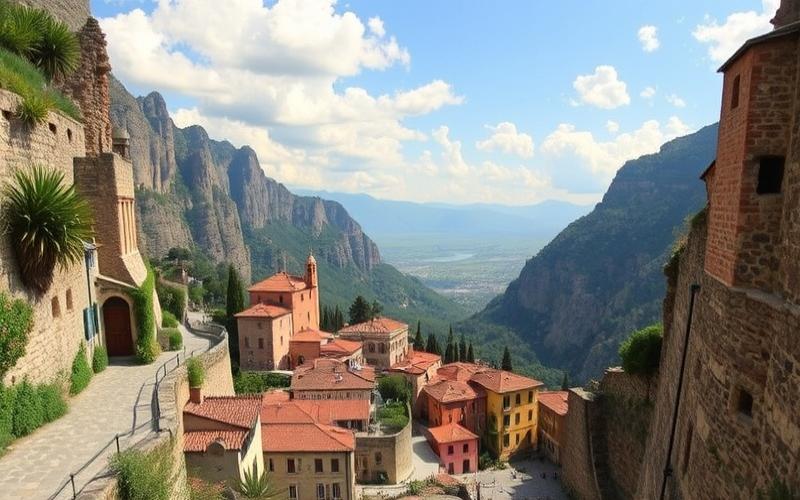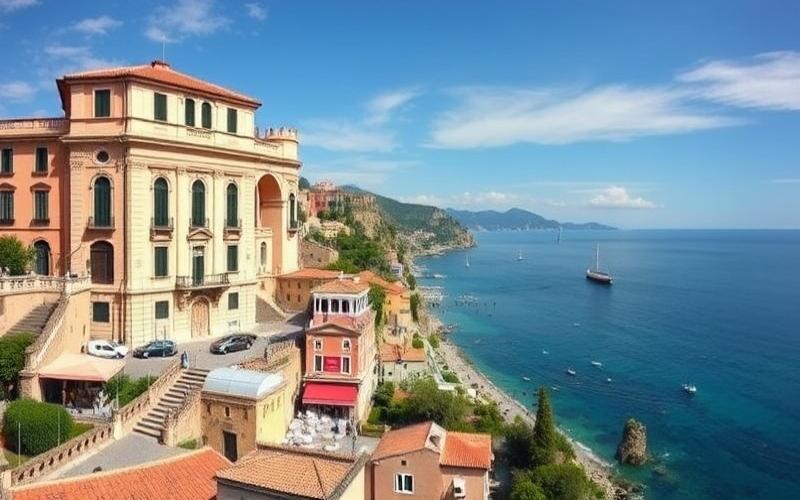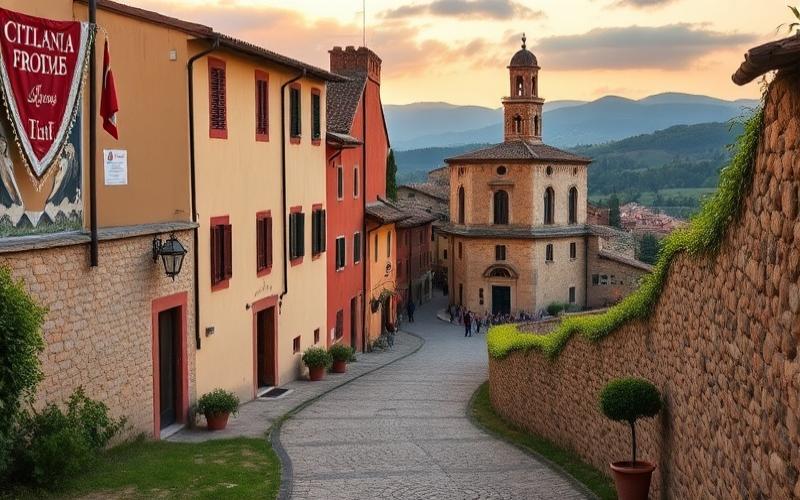
 Published on and written by Cyril Jarnias
Published on and written by Cyril Jarnias
Investing in Italy’s Authentic Villages
In the heart of Italy, authentic villages offer a unique investment opportunity for those seeking to combine cultural heritage with economic potential. While urban real estate markets are often saturated and expensive, these small localities are brimming with ancestral charm and present promising development possibilities by 2025.
Good to Know:
Thanks to government initiatives aimed at revitalizing rural areas and encouraging sustainable tourism, investing in these picturesque villages could prove to be a wise and profitable decision, while contributing to the preservation of invaluable heritage.
Highlighting Italy’s Underestimated Rural Regions
Italy’s underestimated rural regions offer a dual advantage for investors: authentic cultural assets and growing tourist demand for experiences rooted in the territory, particularly through agritourism and slow travel.
Unique Assets and Untapped Potential
- Preserved tangible and intangible heritage in lesser-known regions like Molise, where UNESCO landscapes, craftsmanship, and hospitality form a rare foundation for premium products and services focused on authenticity.
- Growth of agritourism: stays at working farms meet the demand for immersive experiences (olive harvesting, grape picking, local cuisine), opening investment opportunities in accommodation, culinary experiences, and terroir education.
- Slow travel momentum: the rise of slow itineraries in Umbria, Apulia, Sicily, and Trentino-Alto Adige confirms the traction of differentiated rural offerings, less saturated and with higher average spending.
Culture, Traditions, and Craftsmanship as Attractiveness Levers
- Participation in agricultural life (harvesting, processing, tastings) enhancing the perceived value of local products and crafts (cheeses, olive oil, wines), with monetizable workshop formats.
- Guided experiences on farms and workshops (winemaking, olive cultivation, pasta-making) that build loyalty and generate direct short-chain purchases.
- Historic rural accommodations (masserie, trulli, centuries-old estates) positioned as boutique hospitality with higher margins due to rarity and cultural storytelling.
Emerging Tourist Appeal
- Travelers seek stays “at the pace of the countryside,” increasing off-season attendance and average stay duration in rural areas.
- Geographic diversity (vineyard hills, truffle forests, volcanic foothills, alpine valleys) enables four-season experience portfolios, reducing seasonality.
Examples of Inspiring Villages and Initiatives
- Molise (villages and hamlets): repositioning through rural tourism, combining agricultural activities, cooking classes, hiking, and horseback riding; a model of integrated experience with high authenticity value.
- Rural Tuscany (e.g., Pienza and surroundings): agriturismi offering farm tours, harvests, and culinary workshops; proof of concept for investments blending production and experiential hospitality.
- Umbria, Apulia, Sicily, Trentino-Alto Adige: upscaling of farm accommodations and activation of heritage assets (masserie, trulli, alpine farms) attracting international audiences seeking distinctive terroirs.
| Investment Lever | Cultural/Natural Asset | Offer Format | Local Impact |
|---|---|---|---|
| Immersive Agriturismo | Agricultural seasons, regional cuisine | Stays + workshops + farm meals | Non-outsourceable jobs, direct sales |
| Built Heritage (masserie, trulli) | Vernacular architecture | Boutique hospitality, events | Heritage restoration, 4-season tourism |
| Slow Itineraries (wine, truffle, transhumance) | UNESCO landscapes, craftsmanship | Thematic trails, guided tours | Longer stays, deseasonalization |
| Craftsmanship and PDO/PGI Products | Cheeses, oils, wines | Workshops, markets, subscriptions | Increased margins, territorial brand identity |
Local Sustainable Development Initiatives
- Income diversification for farms without abandoning agricultural activity (agritourism framework), supporting economic resilience and preservation of traditional practices.
- Promotion of low-impact activities (hiking, horseback riding, local cuisine) and short supply chains, aligned with landscape and heritage protection.
Strategies to Catalyze More Investment
- Structure “authenticity corridors” linking multiple villages and farms around a theme (olive oil, truffle, pastoralism), with experiential passes and unified ticketing to increase ARPU and share marketing.
- Create co-financed (public-private) heritage restoration funds targeting masserie, mills, drying houses, with impact obligations (local jobs, bio-sourced materials, energy efficiency).
- Develop D2C platforms for local producers (seasonal subscriptions, terroir boxes) tied to stays, to generate recurring revenue off-season.
- Establish “low-impact agritourism” standards: water management, renewable energy, soft mobility, organic waste management; condition tax incentives on compliance.
- Train “host-artisans”: intergenerational transmission programs (pasta, cheeses, cured meats, ceramics) and workshop animation certification to monetize living craftsmanship.
- Launch agricultural event calendars (grape harvests, olive harvests, haymaking) to smooth demand and strengthen micro-destination awareness.
Key Preservation Principles to Integrate in Every Project
- Priority to rehabilitation over new construction; local materials and traditional techniques.
- Capped capacity and flow management to avoid touristification and maintain community life.
- Ecological and cultural performance contracts: share of local purchases, conservation of ancient varieties, maintenance of agricultural practices.
Investing in Italy’s underestimated rural regions means capturing global demand for authenticity while strengthening local economies: agritourism and slow travel offer replicable, profitable models aligned with the preservation of living heritage.
Good to Know:
Italy’s underestimated rural regions, such as Basilicata and inland Sardinia, are full of untapped potential for investors seeking authenticity. Endowed with rich local culture, traditional festivals, and unique crafts like Deruta pottery or Sardinian textiles, these areas attract tourists looking for authentic experiences. Villages like Matera, now a UNESCO World Heritage site, testify to the success of local initiatives facilitating sustainable development and the circular economy. To encourage more investment, it’s essential to improve infrastructure while preserving cultural and natural heritage, and to develop public-private partnerships. Strategies such as promoting thematic tourist circuits and highlighting local products can strengthen the local economy while ensuring an unforgettable tourist experience.
The Advantages of Italian Rural Real Estate for a Profitable Investment
Italian rural real estate is attractive due to its more affordable prices, rising demand linked to remote work and the search for space, and an incentivizing tax framework for energy renovation, making it a vector for capital gains and competitive rental yields in 2025.
Profitability and Attractiveness Factors
- Lower entry prices than in major cities, with rising demand for villages and independent houses, driven by remote work and the quest for outdoor space.
- Renovation and value creation thanks to energy efficiency incentives (Superbonus, Ecobonus), reducing the net cost of work and improving resale value.
- Recovering national market in 2025 (transactions +11.2% H1 vs H1 2024; average prices up 2.5% in major cities), supporting confidence and spillover effects to peripheral and rural areas.
- Yields: major cities show 3–5% gross for long-term rentals, while well-positioned rural tourist areas can target 8–12% gross through seasonal rentals, subject to professional management.
2025 Trends in Rural Areas
- Increased appeal of small centers: decline of mass tourism, rise of remote work, demand for outdoor spaces.
- Market normalization with expected easing of interest rates, stimulating real estate investment, including outside metropolitan areas.
- Energy focus: premium on renovated and efficient properties, a criterion becoming decisive for European demand.
Rural vs Urban Price Comparison in 2025
Major cities (Milan, Rome) lead price increases, while rural areas maintain lower entry levels, offering a better price/m² ratio and potential for catch-up via renovation and rising demand for extended stays.
Tax Incentives and Grants
- Superbonus and Ecobonus: schemes favoring energy renovation of old buildings, often utilized in villages and hamlets, improving project net profitability and heritage appeal.
- These mechanisms support the progressive renewal of supply, especially in rural areas, where old stock is significant and improvable.
Italian Villages with Renewed Interest and Appreciation Potential
- Tuscany (medieval villages): strong international demand for stone houses and casali with land; the combination of heritage + eco-renovation supports valuation.
- Apulia (rural borgate): appeal for trulli and masserie, strong seasonal dynamics conducive to high rental yields, with potential for post-renovation capital gains.
- Inland Liguria and rural Piedmont: more affordable alternatives to the coast, benefiting from the diversion of mass tourism to the hinterland and the rise of ecotourism.
Lifestyle and Expected Returns
- Serene living environment: nature, heritage, outdoor spaces; key criterion for post-pandemic buyers and remote workers.
- Hybrid monetization: personal use + seasonal rental to smooth vacancy and increase annualized yield.
- Safe-haven value: in a more favorable macro context (stabilized inflation, lower rates), real estate retains its defensive role and attracts long-term savings.
Examples and Recent Feedback
- Investors who acquired in rural tourist areas (e.g., Apulia) achieve 8–12% gross in seasonal rentals with professional management and energy-efficiency-oriented renovation.
- Market players report increasing flow to villages and independent houses, correlated with remote work/space demand, validating the rural investment thesis.
2025 Outlook
Sustained demand driven by more favorable financing conditions and preference for renovated/eco-efficient properties.
Risk/opportunities: premium on renovated and well-managed assets; sensitivity to incentive timelines and energy quality; rental arbitrage between long-term and seasonal based on micro-location.
Table — Advantages of Italian Rural Real Estate in 2025
| Axis | Value for the Investor |
|---|---|
| Entry Price | Lower than urban, margin for value creation through renovation |
| Demand | Remote work, nature, long stays, ecotourism |
| Incentives | Superbonus/Ecobonus, lowering net work costs |
| Yields | 8–12% gross seasonal in well-located rural tourist areas |
| Exit | Appreciation potential via energy upgrading and rarity of authentic product |
Investment Best Practices
- Target villages with stable tourist flow and decent access (regional train stations, airports).
- Prioritize properties to renovate with strong energy leverage to benefit from incentives and rapid revaluation.
- Structure professional rental management to capture high season and improve occupancy.
- Monitor 2025 evolution of interest rates and incentives to optimize acquisition and work timing.
Good to Know:
Italian rural real estate offers numerous advantages for a profitable investment, with prices significantly more affordable than in urban areas, attracting investors looking to leverage remote work and a peaceful living environment. Authentic villages like Matera or Civita di Bagnoregio are experiencing renewed interest, offering significant appreciation potential. The Italian government supports these initiatives with tax incentives and grants, aiming to revitalize these regions. The rural real estate market presents promising prospects for 2025, thanks to incentives favoring buyers and growing interest in a more serene lifestyle. Recent investors report positive returns in these areas, highlighting the increasing appeal of places combining traditional charm and business opportunities.
Preserving Authenticity and Heritage in Italian Villages
Preserving the authenticity of Italian villages is a major economic asset: their architectural, historical, and cultural identity creates a differentiating rarity that attracts investors seeking places with high heritage value and premium experiences rooted in the terroir.
- Italian villages, the borghi, offer an “art of living” made of cobblestone alleys, colorful facades, small squares, and local sociability, which fuels residential and tourist appeal while supporting local businesses.
- Rankings and labels (UNESCO, heritage routes) strengthen international visibility and secure private investments through a clear conservation framework.
Key Heritage Highlights Underpinning This Value:
- Architecture: stone houses, Gothic and Renaissance buildings, villas and palaces, dense medieval fabrics; examples in Orvieto (Gothic Duomo, communal palaces) and Bellagio (historic villas).
- Urban history: continuous troglodyte habitats in Matera since prehistory, Byzantine rock-hewn churches; UNESCO recognition since 1993.
- Living culture: civic and religious museums, literary and landscape festivals (e.g., Aliano around Carlo Levi), local viticulture and gastronomy as economic identity levers.
Examples of Villages Balancing Authenticity and Contemporary Investments:
- Matera (Basilicata): restoration of the Sassi under conservator supervision, reopening to habitation, controlled development of troglodyte hospitality and film shoots, following 1993 UNESCO inscription.
- Sant’Agata de’ Goti (Campania): rehabilitation of old buildings and rise of slow tourism, combining preservation and new economic benefits.
- Aliano (Basilicata): activation of a literary park and landscape festival, mobilizing intangible heritage to attract visitors and support the local creative economy.
- Sambuca di Sicilia (Sicily): “1 euro houses” program conditioned on renovation work, attracting private capital for building restoration while revitalizing social and commercial fabric.
- Orvieto and Bellagio: enhancement of monuments and historic villas as pivots for quality cultural and landscape tourism.
Challenges of Balancing Economic Development and Conservation:
- Risk of museumification and loss of residents to seasonal tourist uses, with pressure on rents and traditional businesses.
- Standardization of offerings and aesthetic banalization if work and activities don’t respect local materials, dimensions, and practices.
- Overtourism in UNESCO or emblematic sites, threatening fragile urban ecosystems and quality of life.
- Governance: complex coordination between conservators, municipalities, investors, and residents, especially in protected historic centers.
Strategies to Preserve Authenticity While Stimulating the Economy:
- Proactive heritage urban planning: material and color charters, specifications for signs and shop windows, tourist density caps, phasing of construction in protected centers.
- Locally anchored investment models: incentives for rehabilitating existing buildings, long-term leases conditioned on restoration, schemes like symbolic price sales with renovation obligations.
- Economic diversification: combine cultural tourism, terroir agri-food, craftsmanship, creative industries, and artist residencies to smooth seasonality.
- Fine flow management: contingent ticketing for sensitive sites, alternative inter-borghi itineraries, promotion of slow tourism and long stays.
- Community empowerment: resident cooperatives for diffuse accommodation, shared artisan shops, social clauses in calls for tenders.
- Partnerships with heritage institutions: support from UNESCO and museum frameworks for conservation, cultural mediation, and training in heritage trades.
Role of Sustainable Tourism and Community Support:
Sustainable tourism favors longer stays, soft mobility, and local consumption, dispersing flows and maximizing spending for businesses anchored in the village.
Local communities, through neighborhood committees and cultural associations, co-design events, interpret heritage, and guarantee the authenticity of practices, as in Aliano with the literary park and festival.
Heritage labels and coherent territorial narratives (e.g., Matera and its Sassi, Orvieto and its religious heritage) structure the offering, align stakeholders, and reassure investors about the longevity of intangible assets.
Table — Action Levers and Expected Effects
| Key Lever | Italian Example | Economic Effect | Authenticity Guarantee |
|---|---|---|---|
| Framed Heritage Rehabilitation | Sassi of Matera | Upscale hospitality, film shoots | Conservator supervision |
| Residential Attraction Programs | 1 euro houses in Sambuca | Private capital, repopulation | Traditional work obligations |
| Slow Tourism and Cultural Events | Sant’Agata de’ Goti, Aliano | Longer stays, local benefits | Programming anchored in history |
| Enhancement of Monuments and Landscapes | Orvieto, Bellagio | Premium cultural tourism | Maintenance of historic buildings and gardens |
Good to Know:
Preserving the authenticity of Italian villages constitutes a valuable asset for attracting investment, as their unique architectural, historical, and cultural heritage sparks global interest. Villages like Civita di Bagnoregio and Alberobello perfectly illustrate how the integration of modern initiatives can coexist with the conservation of their traditional character. These villages have maintained their original stone structures, which testify to a rich history, while adopting sustainable economic development projects. A major challenge lies in the delicate balance between economic dynamism and cultural preservation, which can be overcome by strategies such as tax incentives for respectful building renovation and the development of infrastructure suited to sustainable tourism. Furthermore, community support, by fostering active resident participation, plays a key role in protecting this heritage, ensuring that tourist development does not dilute the cultural essence of the places.
Disclaimer: The information provided on this website is for informational purposes only and does not constitute financial, legal, or professional advice. We encourage you to consult qualified experts before making any investment, real estate, or expatriation decisions. Although we strive to maintain up-to-date and accurate information, we do not guarantee the completeness, accuracy, or timeliness of the proposed content. As investment and expatriation involve risks, we disclaim any liability for potential losses or damages arising from the use of this site. Your use of this site confirms your acceptance of these terms and your understanding of the associated risks.

